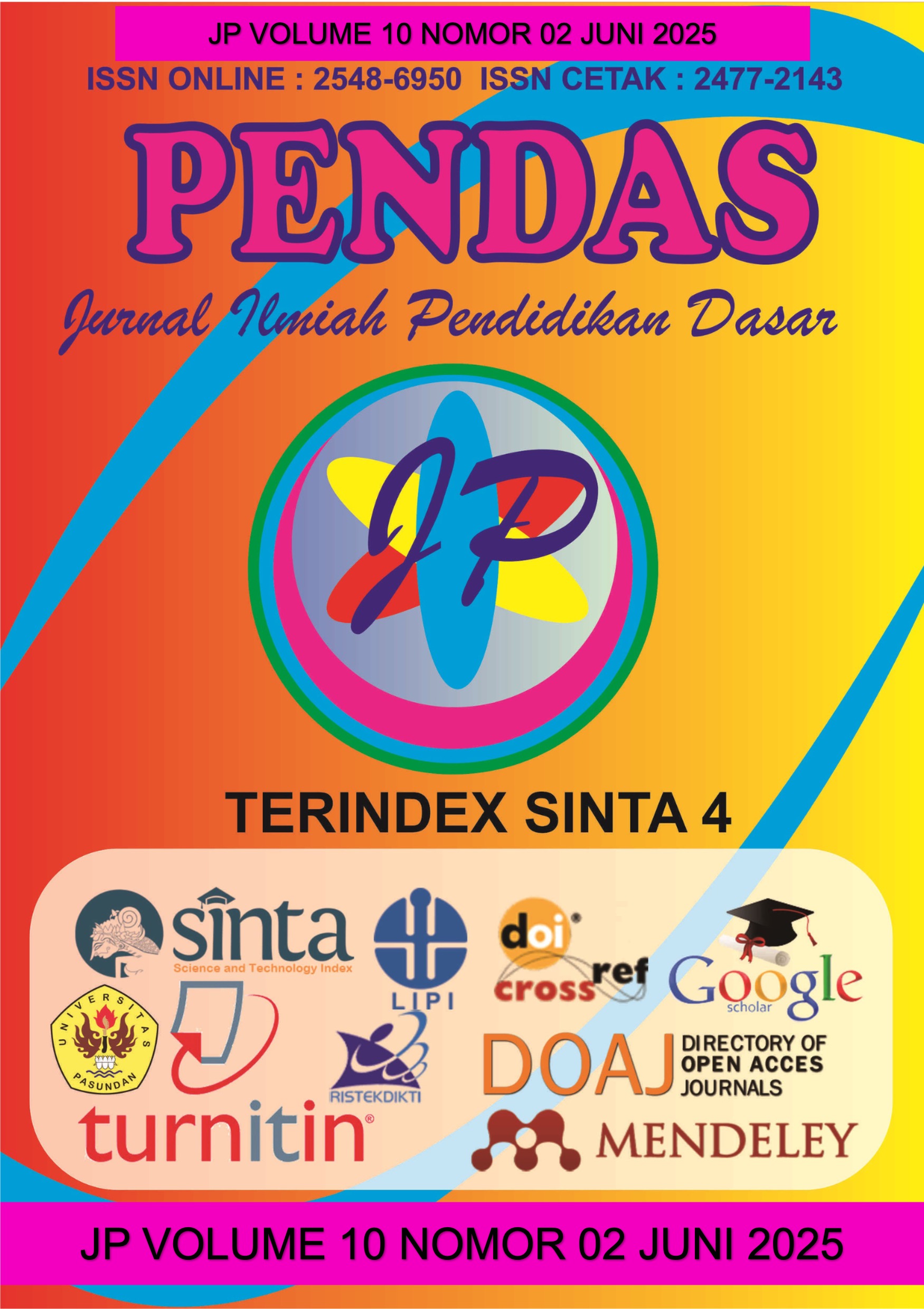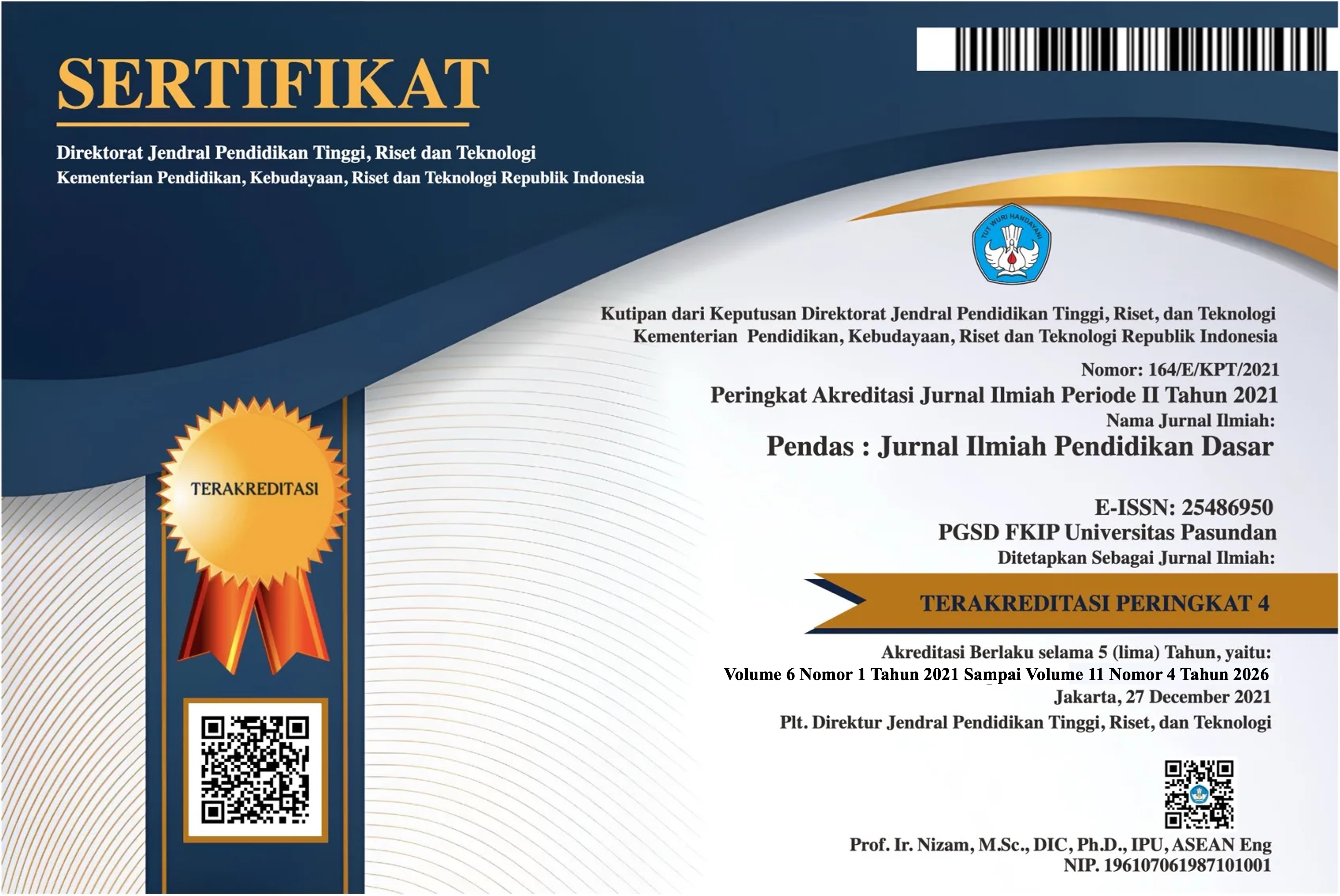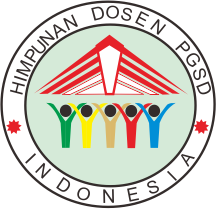PENGARUH MODEL PEMBELAJARAN POE (PREDICT-OBSERVE-EXPLAIN) BERBASIS SAINS TERNOLOGI MASYARAKAT TERHADAP HASIL BELAJAR SISWA TENTANG DAUR AIR DI KELAS IV UPT SPF SD INPRES MACCINI SOMBALA 1
DOI:
https://doi.org/10.23969/jp.v10i02.25696Keywords:
Predict-Observe-Explain (POE), Science-Technology-Society (STS), Learning Outcomes, Water CycleAbstract
This study was motivated by the low student learning outcomes on the topic of the water cycle, primarily due to the use of conventional teaching methods that are less engaging and lack contextual relevance. To address this issue, the Predict-Observe-Explain (POE) learning model based on Science-Technology-Society (STS) was implemented to enhance students’ understanding through active involvement and the integration of scientific concepts with real-life applications. The purpose of this study was to examine the effect of the POE learning model based on STS on the learning outcomes of fourth-grade students in the water cycle topic at UPT SPF SD Inpres Maccini Sombala 1. The study employed a quasi-experimental design with a control group pretest-posttest format. The population consisted of 56 fourth-grade students divided into two groups: 28 students in the experimental group and 28 in the control group. Data collection techniques included observation, documentation, and multiple-choice tests administered before and after the intervention. The data were analyzed using descriptive and inferential statistics. The findings revealed that the experimental group’s average posttest score increased significantly from 64.00 to 84.43, while the control group’s score improved from 54.57 to 75.71. An independent sample t-test yielded a significance value of 0.000 < 0.05, indicating a statistically significant difference in learning outcomes between the two groups. Thus, it can be concluded that the POE learning model based on STS is effective in improving students’ understanding of the water cycle. Moreover, it promotes scientific literacy and awareness of water's importance and its technological management in line with 21st-century education values.
Downloads
References
Adeulliah, N., Murniviyanti, L., &
Heldayani, E. (2023).
Pengaruh Model Pembelajaran
POE (Predict-Observe-
Explain) terhadap Hasil Belajar
IPA Siswa Kelas V SD.
Didaktik: Jurnal Ilmiah PGSD
STKIP Subang, 9(5), 871–879.
Arikunto, Suharsimi. 2013. Prosedur
Penelitian. Jakarta: Rineka
Cipta.
Aziz, Emmi dkk. 2020. ROAR: Solusi
Peningkatan Pemahaman
Konsep Pembelajaran. Jawa
Barat: CV Jejak.
Cahyani, N. W., Agung, A. A. G., &
Magunayasa, I. D. (2014).
Pengaruh Model POE dan
Minat Belajar Terhadap Hasil
Belajar IPA. Jurnal Mimbar
PGSD Universitas Pendidikan
Ganesha, 2(1).
Kemendikbud. 2017. Panduan
Penilaian oleh Pendidik dan
Satuan Pendidikan. Jakarta :
Kemendikbud.
Novanto,Y. S., Anitra, R., &
Wulandari, F. (2021).
Pengaruh Model Pembelajaran
POE Terhadap Kemampuan
Pemahaman Konsep IPA
Siswa SD. ORBITA: Jurnal
Pendidikan Dan Ilmu Fisika,
7(1), 205–211.
Novtiana, Irma. 2021. Siklus Air dan
Dampaknya Bagi Kehidupan.
Banjarnegara : Universitas
Negeri Semarang.
Sugiyono. 2017. Metode Penelitian
Pendidikan Pendekatan
Kualitatif, Kuantitatif, dan R&D.
Bandung: Alfabeta
Sugiyono. 2020. Metode Penelitian
Kuantitatif, Kualitatif dan R&D.
Bandung: Alfabeta.
Sitti Hasmiyanti Sapiuddin, Hilmi
Hambali, & A.Muafiah Nur.
(2023). Pengaruh Model
Pembelajaran POE (Predict-
Observe-Explain) Terhadap
Hasil Belajar IPA Materi
Perubahan Sifat Benda Kelas
V SDN 17 Binamu Kabupaten
Jeneponto. Jurnal Nakula :
Pusat Ilmu Pendidikan,
Bahasa dan Ilmu Sosial, 1(6),
01–18.
Siti Nurhalizah. (2021). Pengaruh
Model POE terhadap Hasil
Belajar IPA Siswa SD
Muhammadiyah 01 Binjai
Yuliani (2020). Identifikasi Faktor
Penyebab Kesulitan Belajar
Siswa Melalui Peran Guru.
Jurnal Taksonomi. Vol. 9, No.
1.
Yulianti, L., dkk. (2020). Pendekatan
STM dalam Konteks
Pendidikan IPA. Jurnal Ilmiah
Pendidikan Sains, 8(1), 59–66.
Downloads
Published
Issue
Section
License
Copyright (c) 2025 Pendas : Jurnal Ilmiah Pendidikan Dasar

This work is licensed under a Creative Commons Attribution 4.0 International License.



















